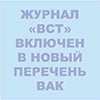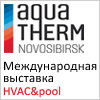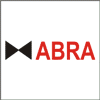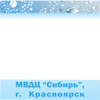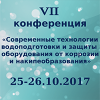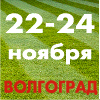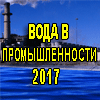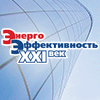№11|2013
WATER SOURCES QUALITY CONTROL
bbk 000000
UDC 628.1.033:543.9
Most significant sanitary microbiological parameters of drinking water quality assessment
Summary
Sanitary control of water is a complex and multilevel process. It is associated with every stage of water use, starting from the water supply source selection, monitoring, and water treatment to disinfection and wastewater disposal to collection facilities. Sanitary and microbiological water assessment implies determining sanitary profile, i. e. criteria that reflect compliance or noncompliance of the object under investigation with the regulatory documents requirements. The determined parameters and the frequency of their measurement depend on the assignment of the project under investigation and are strictly regulated by the respective regulatory framework. Sanitary parameters are divided into index parameters
that reflect the level of fecal pollution and indicator parameters that reflect the quality of water treatment. Index parameters include: Escherichia сoli, thermotolerant coliforms and coliphages. Indicator parameters are: total microbial count, total coliforms, sulfite-reducing clostridia spores etc. Determination of some pathogenic and opportunistic pathogenic bacteria like salmonella, pathogenic staphylococcus, blue pus bacillus etc. is an important aspect of water bodies monitoring. EC countries moved from determining groups of sanitary indicator microorganisms (thermotolerant coliforms, fecal staphylococcus, sulfite-reducing clostridia spores) to determining directly sanitary indicator microorganisms (Escherichia coli, Enterococcus faecalis, Clostridium perfringens), which makes water quality assessment more standardized and reliable. Advanced methods and approaches to the assessment of the sanitary state of the water bodies are continuously emerging and introduced in the international practice of sanitary surveys.
Key words
potable water , water quality , total coliform bacteria , sanitary index , index parameter , indicator parameter , Escherichia coli , thermotolerant coliforms , coliphages , total microbial count , salmonella , P. aeruginosa , S. aureus , sanitary microbiological assessment , sanitary indicator microorganism , chromogenic substratum
The further text is accessible on a paid subscription.
For authorisation enter the login/password.
Or subscribe
REFERENCES
- SanPiN 2.1.2.1188-03. Plavatel’nye basseiny. Gigienicheskie trebovaniia k ustroistvu, ekspluatatsii i kachestvu vody. Kontrol’ kachestva [SanPiN 2.1.2.1188-03. Swimming pools. Hygienic requirements to the design, operation and water quality. Quality control]. (In Russian).
- SanPiN 2.1.4.1074-01. Pit’evaia voda. Gigienicheskie trebovaniia k kachestvu tsentralizovannykh sistem pit’evogo vodosnabzheniia. Kontrol’ kachestva: sanitarno-epidemiologicheskie pravila i normativy [SanPiN 2.1.4.1074-01. Drinking water. Hygienic requirements to the quality of public drinking water supply. Quality control: sanitation-and-epidemiological rules and regulations]. (In Russian).
- SanPiN 2.1.4.1116-02. Pit’evaia voda. Gigienicheskie trebovaniia k kachestvu vody, rasfasovannoi v emkosti. Kontrol’ kachestva [SanPiN 2.1.4.1116-02. Drinking water. Hygienic requirements to bottled water quality. Quality control]. (In Russian).
- SanPiN 2.1.4.1175-02. Gigienicheskie trebovaniia k kachestvu vody netsentralizovannogo vodosnabzheniia [SanPiN 2.1.4.1175-02. Hygienic requirements to the quality of water in noncentralized water supply]. (In Russian).
- SanPiN 2.1.5.980-00. Vodootvedenie naselennykh mest, sanitarnaia okhrana vodnykh ob”ektov. Gigienicheskie trebovaniia k okhrane poverkhnostnykh vod [SanPiN 2.1.5.980-00. Community wastewater disposal, sanitary protection of water bodies. Hygienic requirements to surface water protection]. (In Russian).
- MU 2.1.4.1057-01. Organizatsiia vnutrennego kontrolia kachestva sanitarno-mikrobiologicheskikh issledovanii vody [Methodical conditions 2.1.4.1057-01. Arrangement of internal control of sanitary microbiological water survey quality]. (In Russian).
- MUK 4.2.2884-11. Metody mikrobiologicheskogo kontrolia ob”ektov okruzhaiushchei sredy i pishchevykh produktov s ispol’zovaniem petrifil’mov [Practical policies 4.2.2884-11. Methods of microbiological control of environmental projects and food products with the use of Petrifilms]. (In Russian).
- Sokolov D. M., Sokolov M. S. Mikrobiologicheskii kontrol’ s ispol’zovaniem petrifil’mov [Microbiological control with the use of Petrifilms]. Molochnaia Promyshlennost’, 2012, no. 2, pp. 36–37. (In Russian).
- MUK 4.2.1018-01. Sanitarno-mikrobiologicheskii analiz pit’evoi vody [Practical policies 4.2.1018-01. Sanitary-microbiological analysis of drinking water]. (In Russian).
- Guidelines for drinking-water quality [electronic resource]: Recommendations. World Health Organization, 2006, vol. 1.
- GOST R 52426-2005 (ISO 9308-1:2000). Voda pit’evaia. Obnaruzhenie i kolichestvennyi uchet Escherichia coli i koliformnykh bakterii. Chast’ 1. Metod membrannoi fil’tratsii [GOST R 52426-2005 (ISO 9308-1:2000). Drinking water. Detection and quantitative accounting of Escherichia coli and coliform bacteria. Part 1. Membrane filtration method]. (In Russian).
- MR № 24 FTs 513. Opredelenie koliformnykh bakterii i E. coli c ispol’zovaniem khromogennykh i fliuorogennykh indikatornykh sred proizvodstva Merck (Germaniia) [Guidelines No. 24 FTS 513. Detection of coliform bacteria and E. coli with the use of Мerck (Germany) chromogenic and fluorogenic indicator substrates]. (In Russian).




